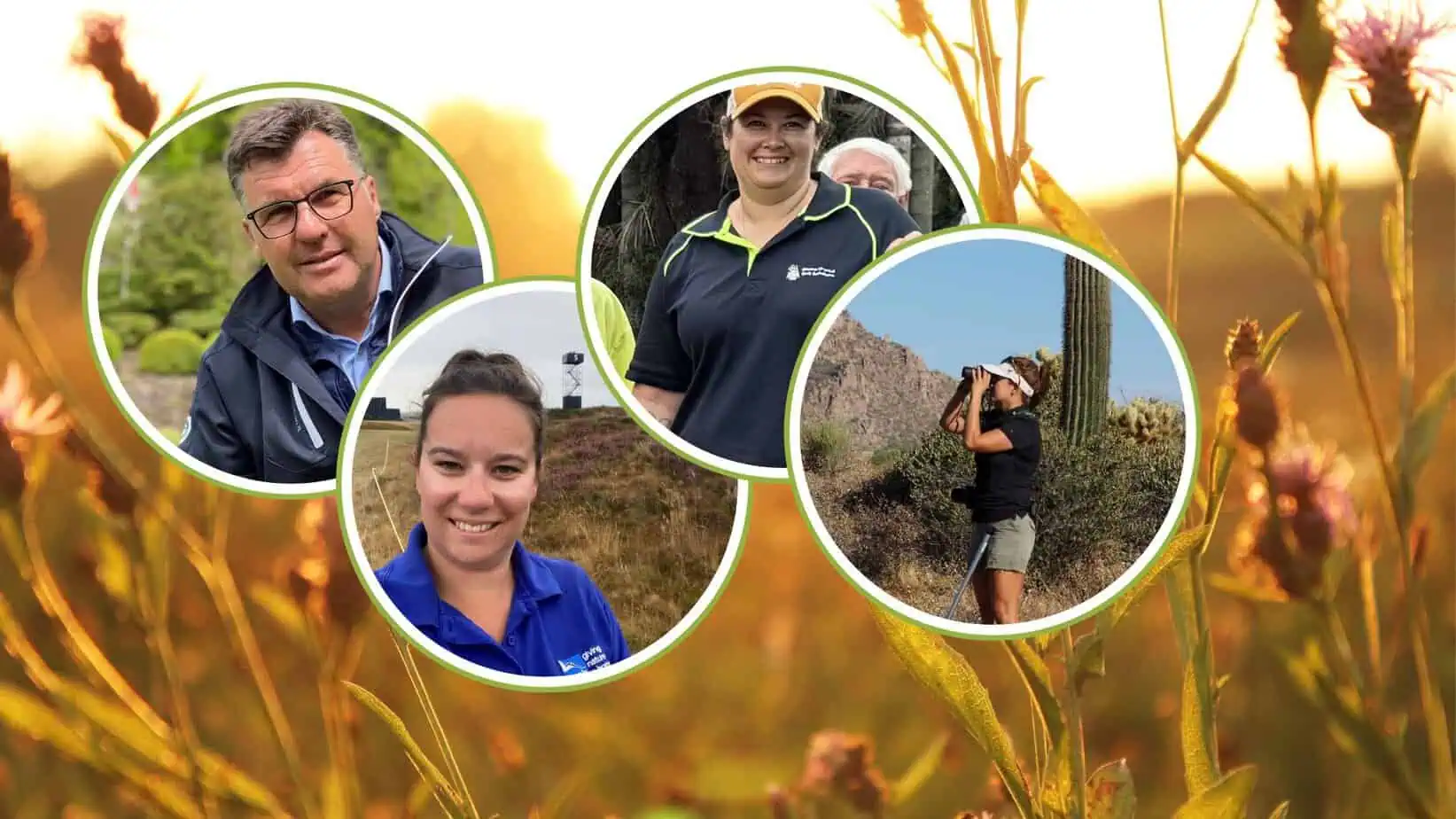Biodiversity strategy: the best tips from the experts
Increasing biodiversity on extensively used areas – this is the topic with which golf courses can also score points in the future. A strategy is needed to make this a successful project in the long term: we asked four experts what they think a biodiversity strategy should look like. With these tips, every golf course can start developing a biodiversity strategy.
As head of the German Golf Association’s biodiversity working group, Dr Gunther Hardt has been involved in the development of species-rich areas on golf courses for years. For him, three points make up a good biodiversity strategy
- The commitment to a biodiversity strategy should be integrated into business operations. It is listed in the mission statement and in the articles of association, and contact persons are named.
- Seek cooperation with existing organizations such as nature conservation associations. You should also participate in existing activities in the golf scene on the subject of biodiversity, such as “Habitat Golf Course” or Golf & Nature. In this way, you can identify and promote biodiversity projects appropriate to the location of the relevant natural or landscape area.
- Integrate the biodiversity strategy into your marketing concept with good press work.
Dr. Marie Athorn advises golf courses on biodiversity projects on behalf of the R&A and the Royal Society for the Protection of Birds in England. These are her strategy tips:
- Tip number 1 would be communication. If you are making changes to the golf course, even in areas that are not playable, and having wildlife surveys carried out, communication with members and the local community is vital. Communicate what is happening and when and why the changes or surveys are being carried out. In this context, you should also report on your successes. If your club has achieved credible successes for wildlife and plants, share this with your members and the local community, but also tell the local press. Many of us are aware of the negative perception of golf clubs in relation to nature and sustainability. Your golf club could help to change this by sharing its significant achievements.
- This leads to my next tip, which is to collaborate with local conservation groups and experts. If your work is supported by reputable and well-known organizations, this can help gain local media attention and add credibility to your actions and results. Another reason for involving local wildlife groups and experts is that while greenkeepers, as land managers, often have good knowledge of golf course management that benefits wildlife and plants, support from well-known conservation organizations or knowledgeable local groups can help make more meaningful contributions to conservation that support local species of conservation concern and help you engage in wider landscape-scale initiatives.
- Tip number 3 is to have a written plan that the club as a whole commits to. Very often sustainability and/or conservation initiatives are set up by one or two dedicated individuals, which can sometimes lead to inconsistencies in implementation and continuity issues. A 5- or 10-year management plan that includes management expertise and timelines can be one way to ensure a clear direction and message to all. Maps as part of this plan can also be a good way of communicating the objectives to different target groups.
Brianne Kenny is Manager of Environmental Solutions at Troon, the world’s largest golf course management company. The American has a master’s degree in biology. These are her tips for developing a sustainability strategy:
- Catalog the species on the property. Knowing the species present on the property provides good baseline data and can also help prioritize species. Golf course managers don’t have to do this alone and can search iNaturalist.org for citizen observations or ask local experts (such as bird watchers, arborists, entomologists) to help with cataloging.
- If invasive species are found on a property, I recommend prioritizing the control of these species before looking to promote native species. By definition, invasive species are harmful to the environment, the economy or the health of humans, animals and plants. Therefore, I recommend creating a management plan for invasive species to reduce their harm and create suitable conditions for native species to thrive.
- This may be an unusual tip, but you should find a mascot for your biodiversity efforts. I learned the value of mascots in my earlier days as a wildlife biologist and zookeeper. They can make a tangible difference when it comes to gaining support for biodiversity projects. People feel connected to a cute species or a species with a compelling story, and that can be the driver for community support. There are many creative ways to use a mascot to communicate biodiversity projects and engage stakeholders.
Kate Torgersen, founder of Environmental Golf Solutions, is involved in the implementation of numerous biodiversity projects in Australia . Her tips for golf courses:
- Favor native vegetation: Incorporate native plant species into your landscaping. Native plants are well adapted to local conditions, support local wildlife and often require less maintenance and water. This approach not only enhances the ecological value of your space, but also helps to protect native species that are slowly disappearing, helping to preserve biodiversity overall.
- Develop green corridors: Create and maintain green corridors within the golf course and connect them to adjacent natural areas. These corridors facilitate the movement of wildlife, promoting a resilient and interconnected ecosystem. Thoughtful planning in this area can greatly enhance biodiversity.
- Encourage community connections: Use your biodiversity initiatives to engage and connect with the local community. Organize educational programs, volunteer planting days and nature walks to promote awareness and participation. By involving the community, you can create a sense of shared responsibility and pride in the course’s environmental efforts.
Subscribe to our newsletter!











